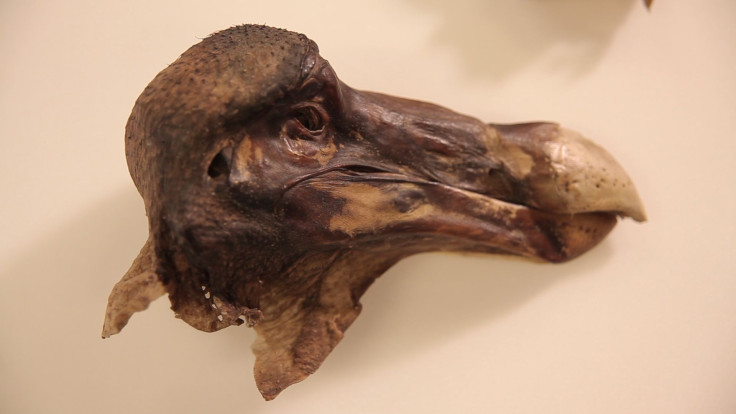Was ‘Oxford Dodo’ Shot? Extinct Bird's Specimen Found To Contain Lead Pellets

The Oxford Dodo, the world’s best-preserved specimen of flightless dodos and a true spectacle for paleontology-lovers, was murdered in cold blood, a group of scientists revealed after witnessing gunshot wounds on its head and neck.
Dodos went extinct more than 300 years ago, but this specific specimen, which still contains soft-tissue and DNA, gave scientists crucial insight into how flightless birds lived and thrived. It even inspired Lewis Carol to include a dodo character in her famous novel "Alice in Wonderland."
It was thought the bird, coming from a group exclusive to Mauritius, was brought to London alive during the mid-1600s and displayed on curiosity shows, where people came to see and feed rare creatures. It later died a natural death, giving John Tradescant the Elder, whose family founded Oxford museums, an opportunity to add the specimen into his collection.
But sadly, scientists from the University of Warwick cast a doubt on this theory and believe the famous bird met an untimed murderous-end after being shot in the neck and back of the head.

While analyzing the remains of the long-dead bird to understand its anatomy, the group spotted mysterious fleck-like particles. They took a closer look at the size and make-up of these particles and discovered these are remnants of lead shot pellets, which were used to hunt wildfowls during the 17th century.
“When we were first asked to scan the Dodo, we were hoping to study its anatomy and shed some new light on how it existed," Mark Williams from the University of Warwick, said in a release. "In our wildest dreams, we never expected to find what we did”.
This came as a big surprise for those at the Oxford University Museum of Natural History in England, where the specimen is currently on display.
“The Oxford Dodo is an important specimen for biology, and because of its connections with Lewis Carroll it is of great cultural significance too,” Paul Smith, the director of the museum, said. “The new findings reveal an unexpected part of [the] history of this specimen as we thought the bird had come to the museum after being displayed as a live specimen in London.”
The finding has many implications. Either the dodo never made it to London alive — which raises questions about how the remains were preserved — or it was shot shortly after coming. It is also possible that these remains belong to a different dodo and not the one that performed at the shows.
That said, for now, the mystery regarding the murder and the person involved remains unsolved. “There is now a mystery regarding how the specimen came to be in Tradescant's collection," Smith told Live Science.
© Copyright IBTimes 2024. All rights reserved.



















